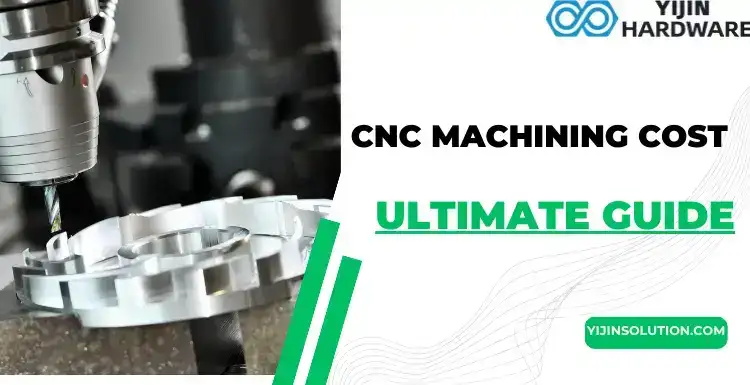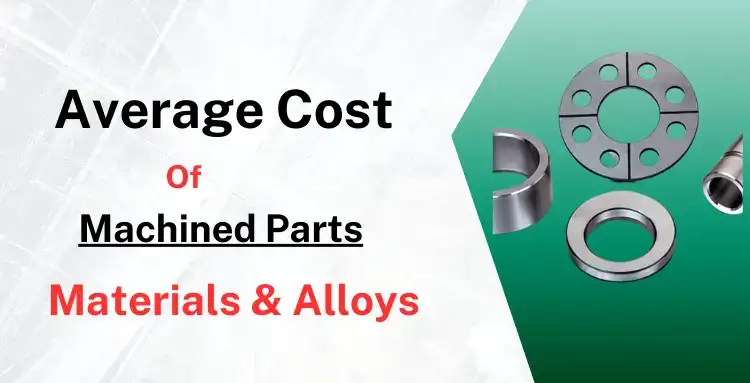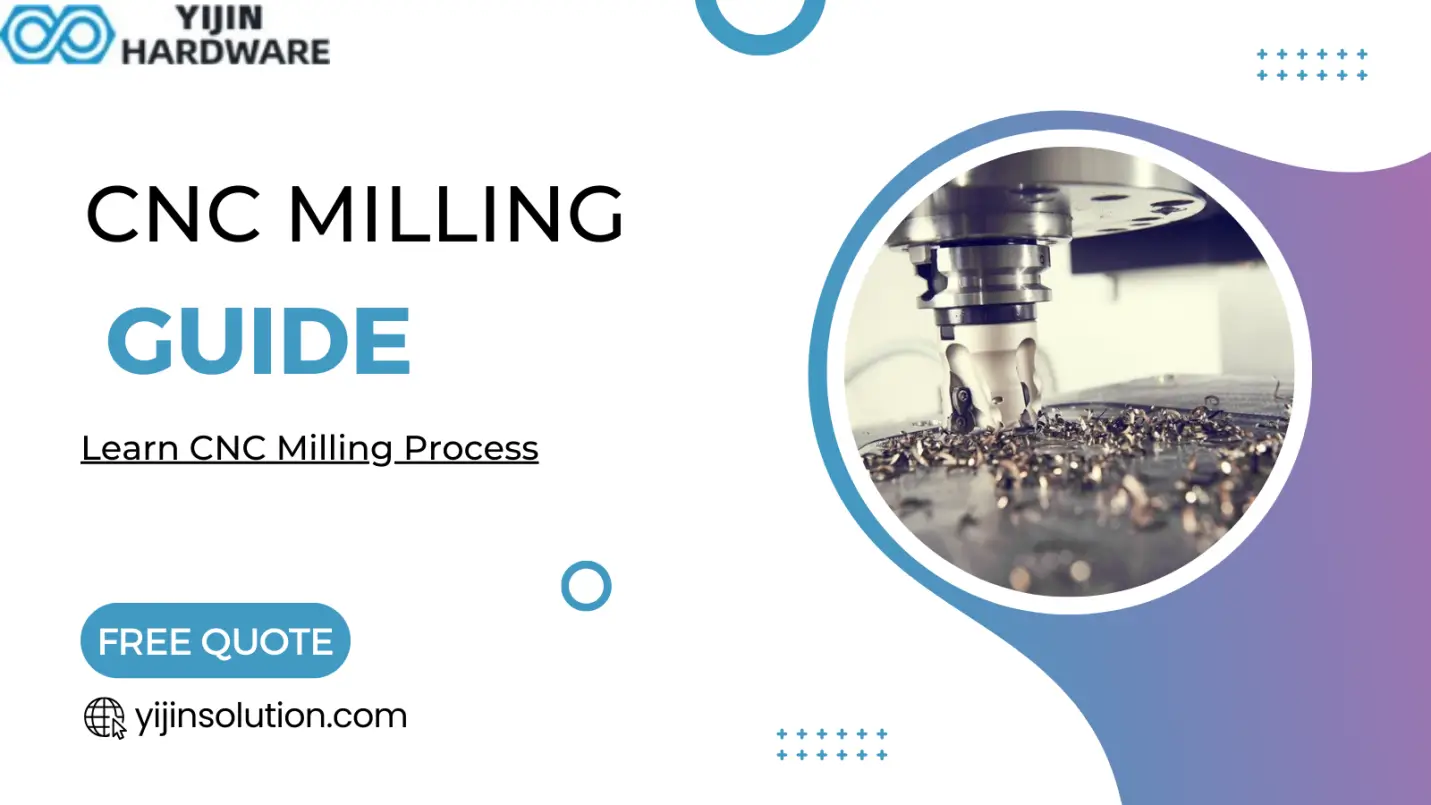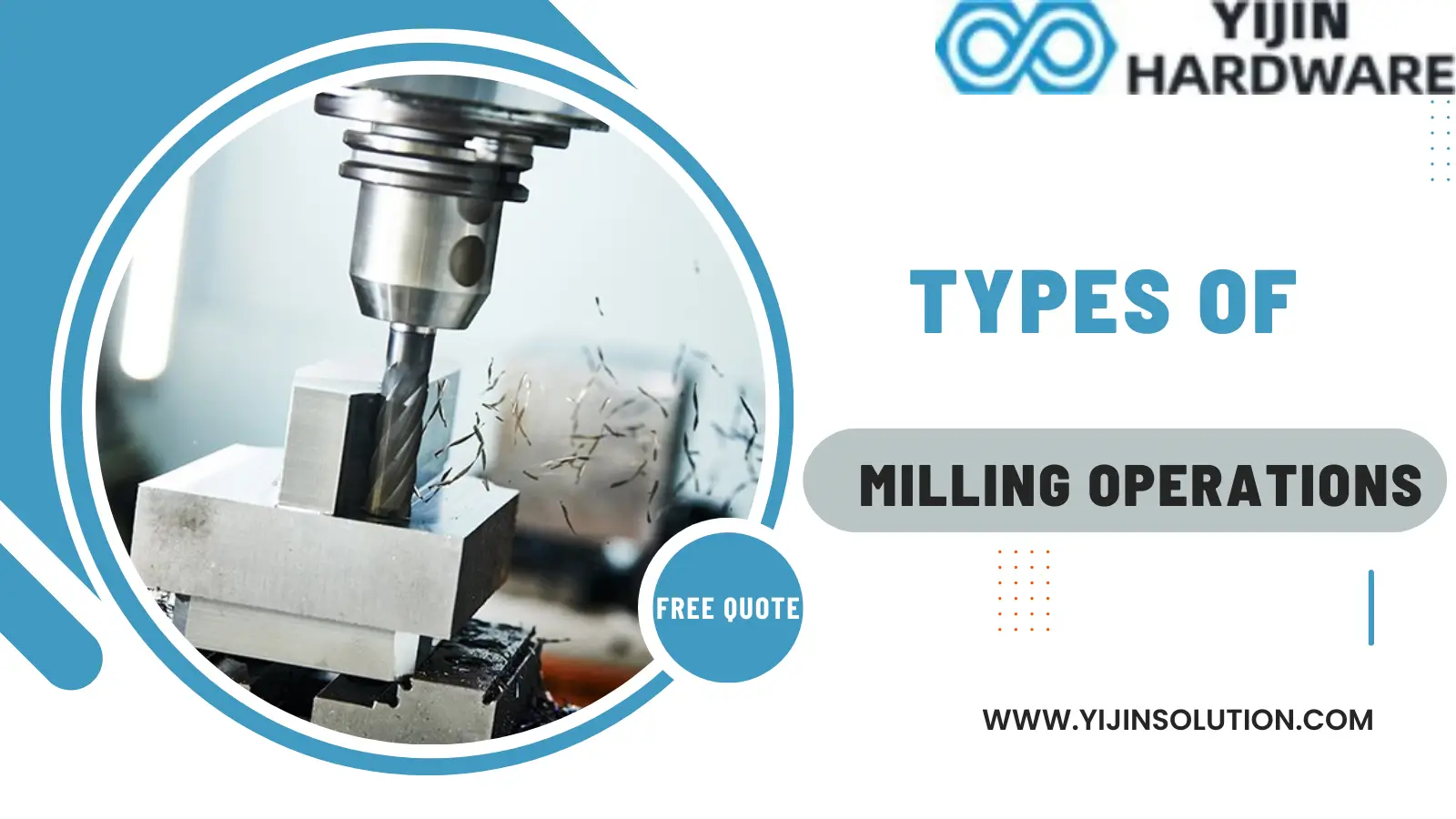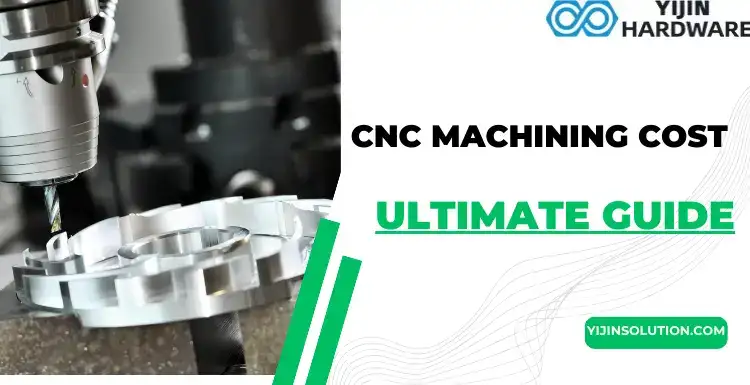
How to calculate CNC machining cost? The cost of machining incurs several factors. For instance, a very complex part can cost up to $250-$350 per hour. Similarly, simple parts are easy to machine. Such parts cost approximately $40.
This article will explain the factors that increase CNC machining costs. In addition, what materials are accessible and affordable for the machine? For example, Aluminum is easily machined at $5-$10 per pound. Similarly, Steel will cost $8-$16 per pound. Stainless steel is expensive ranging from $1.87 to $3.14 per pound. Moreover, plastics are a little cheaper, ranging from $1 to $2 per pound for ABS.
So this is just a basic idea. In the article below, we shall understand the cost analysis of CNC machined parts, such as design, production volume, and shop location.
Cost Factors in CNC Machining
CNC machining can be significantly affected by the type of CNC machine used and its capabilities, influencing its cost. Since different CNC machines are specialists in various tasks, their complexity is directly related to the cost of operating one.
Milling machines are exceptional at producing three-dimensional parts with various features, such as pockets and even flat surfaces. They use multi-axis cutting tools that safely remove material from a workpiece. In contrast, lathes are cutting devices that specialize in producing rounded or cylindrical shapes. Also, lathes rotate a workpiece while the cutting tool machines its exterior. Furthermore, the number of axes a CNC machine has affects the cost.
You May Also Like:
CNC Machining Cost per Hour (Estimated)
| Machine Type | Cost per Hour (USD) | Notes |
| 3-Axis CNC Machining | $50 – $100 | Simpler machines, suitable for basic parts. |
| 4-Axis CNC Machining | $75 – $125 | Offers increased flexibility compared to the 3-axis. |
| 5-Axis CNC Machining | $100 – $150+ | Most complex, ideal for difficult parts. |
While a simple 3-axis machine can only move a cutting tool in three directions, 5-axis machines offer additional rotational capabilities. This allows the tool to reach unique angles and eliminate the need for multiple setups. While providing greater customization, the rigidity of 5-axis machines comes with an extra cost compared to their 3-axis machining process.
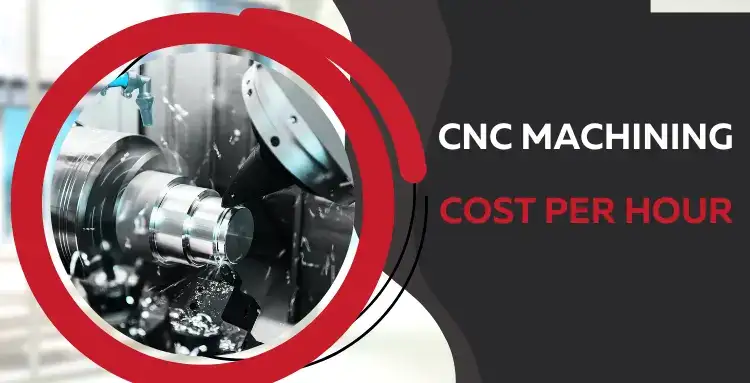
Material Selection Impacts the Overall Cost
The material you choose for your CNC machined part also has a surprising impact on the final cost. There are two major reasons for this:
- The Machining Choice
- The Costs of The Raw Material
Think about the difference between carving wood and carving a stone. The wood is easier to work with. It is the same idea with CNC machining. Different materials have different machinability characteristics. It refers to how easy they are to cut and shape with CNC tools.
The softer the material, the easier it is to machine with less wearing down on cutting tools and the faster the machining rates. Subsequently, the cost of such materials will be significantly low.
On the other hand, the harder the material, the more difficult it is to work with. The cutters wear out quicker and have to have slower machining rates. This increases the total cost of tool replacement and single parts.
Cost of Raw Materials
Beyond machinability, the cost of the raw material itself directly affects the final machined costs. For example, aluminum material has a lower price compared to stainless steel. This means that the cost for the raw material aluminum part will be lower than the stainless steel part without considering the machining concerns.
While it is tempting to choose a highly machinable material like aluminum due to its low prices, one must choose a material based on the appropriate condition. Some applications require less machinable parts due to property requirements like strength or heat resistance. Therefore a great balance in machinability, raw material cost, and part-final property must be maintained.
Impact of Design on Machining Cost
The complexity of your part’s design has a high impact on the final CNC machining cost. The best way to understand this is:
How much time does it take to manufacture a simple block?
Obviously, carving a detailed sculpture is harder and takes a lot more time. The same concept applies to CNC machining. Parts that possess complex geometries, many features such as:
- Holes
- Pockets, or slots
- And tight tolerances
All these entail more machining time usually increases the cost by a lot. Moreover, thin walls are a big problem too. The minimum cut diameter of a CNC machining tool can make machining down thin walls very difficult.
If not impossible, without special techniques that may require:
- Slower machining speeds
- More setups
- And ultimately increase the cost of machining.
The good news is that you can, to an extent, control the effect of part complexity on costs. One main solution is Design for Manufacturability (DFM). It is a set of principles intended to optimize designs for cost-effective and efficient CNC machining.
By designing parts with DFM principles in mind, you can effectively reduce CNC machining costs with these two methods:
- Simplify geometries – choose the simplest shape possible for each part to reduce machining time.
- Minimize features – minimize the number of holes or pockets, etc.
Design parts that are easier and faster to machine. Reduce feature count. Relax tolerances where possible – some dimensions may not require tight tolerances to meet system function.
Production volume
The number of parts is one of the factors that significantly determine the cost per part. This dynamic is dependent on the economies of scale principle. Similarly, economies of scale come into play in CNC machining.
As discussed above, there is the cost of running the CNC machine each hour. By producing a single part, the machine mainly produces those parts throughout the entire cycle.
Machine Operating Time
However, a machine that produces many parts per time during the run of the production cycle will utilize the machine’s operating time.
As a result, the cost of running the machine is spread among the parts. This method makes the cost per part lower.
Setup Cost
The cost of production can be increased or reduced based on the production volume. Setup involves preparing a CNC machine to make a specific part. This includes:
- Code creation for the cutting path
- The raw material
- And tool calibration
However, there is a recurring cost that is free from the production volume.
Finishing Options
Of course, not every way from a raw block of material to a finished part involves CNC machining. There are additional steps after machining that can be made to improve:
- The appearance
- Functionality
- Special properties of the part
These are called finishing operations. While they can undoubtedly make the final part much better, they also add up to the total cost. Each surface finishing operation requires an extra step in the production of the part. For instance, additional labor, materials, and longer lead time can increase the machining cost.
Understanding Hourly Rates
First, you need to understand that hourly rates are not the only determinant of the cost of CNC machining. Below is an overview of average hourly costs based on machine complexity.
3-axis CNC machining is generally simpler. It costs $50 to$100 an hour. 5-axis CNC machining costs are correspondingly higher than the 3-axis CNC machining. These machines cost approximately between $75 and$150 an hour.
Note: These costs are based on estimation. The actual cost can vary.
To check the final cost of CNC machined parts consider the following checkpoints:
- The location of the shop
- Maintenance of the machine
- Operator experience
- The complication of a specific project will influence the specific cost per hour.
Note that the rate per hour is only one factor contributing to the project’s overall costs. For example, a one-hour machining of a part using the 3-axis machine may cost less than a more complex part.
How to calculate CNC machining cost?
I got you here: You must be searching formula to calculate CNC machining costs. The reality is a bit different. There’s no single equation to answer your question. However, you can get an idea below:
CNC Machining Cost Calculator
Estimated Cost = (Material Cost + Setup Cost) + (Machining Time * Hourly Rate) + Finishing Cost
However, if you need to get a more precise idea about machining cost you should get an online quote:
For example, if you contact Yijin Hardware, you can get a free CNC machining quote by providing the following information:
- Part drawings
- Material specifications
- Desired tolerances
- Quantity required
- Finishing requirements
Read More: How to Caculate CNC Milling Cost?
Average Cost of CNC Machined Parts: Material Specified (per unit)
| Material | Estimated Cost Range ($/unit) | Lead Time (Estimated) |
| Aluminum (6061) | $2 – $10 | 2 – 5 days |
| Aluminum (7075) | $3 – $12 | 3 – 7 days |
| Steel (Low Carbon) | $4 – $15 | 3 – 7 days |
| Steel (AISI 1018) | $4 – $12 | 2 – 5 days (Common grade) |
| Steel (Stainless Steel 304) | $6 – $20 | 3 – 8 days |
| Steel (Stainless Steel 316) | $8 – $25 | 4 – 10 days (More corrosion resistant) |
| Brass (C360) | $5 – $12 | 2 – 6 days |
| Brass (Naval Brass) | $6 – $15 | 3 – 8 days (Higher strength) |
| Acetal (Plastic) | $3 – $8 | 2 – 5 days |
| Polycarbonate (Plastic) | $4 – $10 | 2 – 6 days |
| ABS (Plastic) | $4 – $9 | 2 – 5 days (Common plastic) |
| PEEK (Plastic) | $8 – $20 | 3 – 8 days (High-performance plastic) |
| Titanium (Grade 2) | $20 – $50 | 5 – 12 days (Difficult to machine) |
| Inconel 625 | $30 – $70 | 7 – 15 days (High-temperature alloy) |
Cost Saving Strategies
CNC machining allows for unrivaled precision, but maintaining reasonable cost is equally essential. Fortunately, there are many strategies you can use to generate cost-efficient CNC machining. They include simplifying geometries. It means you should ensure:
- Your model has the smallest number of features
- Loosen tolerances when possible
- The more you order at once, the cheaper it is per unit.
You can also ensure that you are lowering your costs by sourcing quotes from additional CNC machine shops. Similarly, quote comparison helps you to make a good decision.
The Cost of CNC Cutting
Both processes are computer-controlled and provide parts of the desired shape, yet the way they achieve this is fundamentally different. Therefore, it will be useful to understand this difference. So, you can easily choose the best method to save CNC machining costs.
| Feature | CNC Machining | CNC Cutting |
| Process | Subtractive (removes material) | Additive (separates material) |
| Tools | Milling cutters, drills, etc. | Lasers, water jets, etc. |
| Material Options | A wide variety (metals, plastics, etc.) | Primarily flat sheet materials (metals, plastics) |
| Ideal for | Complex geometries, tight tolerances | Clean cuts & fast turnaround |
Conclusion
Summing up the entire article, we have concluded. Several factors are important for the final cost of CNC machining. Similarly, we provided different tables to understand an estimated cost. It will give you a general idea. However, to get the most accurate price for machined parts, we shall recommend you contact a reliable CNC machining company.
 Call Us Today! (+86) 188-2253-7569
Call Us Today! (+86) 188-2253-7569